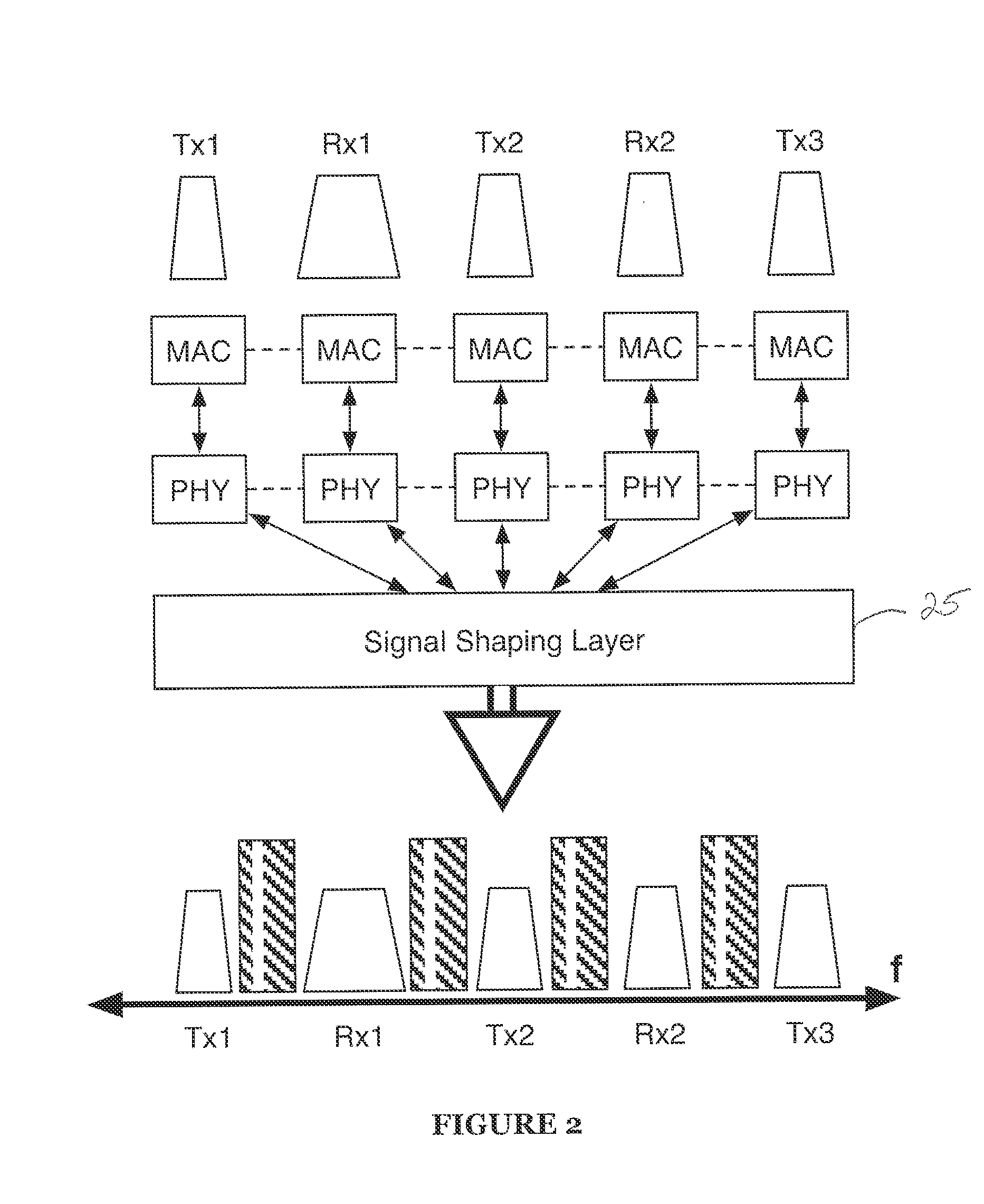Self-interference cancellation
a full-duplex wireless communication and self-interference technology, applied in data switching networks, instruments, frequency-division multiplexes, etc., can solve problems such as preventing system operation and over-powering the receiver
- Summary
- Abstract
- Description
- Claims
- Application Information
AI Technical Summary
Benefits of technology
Problems solved by technology
Method used
Image
Examples
Embodiment Construction
[0043]Embodiment of the present invention relate processing signals and, in particular, to a full-duplex signal shaping system. The system may include one or more antennas for transmitting and / or receiving signals over a plurality of wireless spectrum fragments and a signal processing layer in communication with the one or more antennas for simultaneously causing reception of the received signal and transmission of the transmitted signal. The signal processing layer may include interference cancellation components for eliminating a portion of interference from the received signal. In some cases, the interference can be caused by the transmitted signal and affect the received signal (i.e. self-interference). The signal processing layer may also include filtering components for removing interference from the received signal. Through use of these components, the full-duplex signal shaping system enables a full-duplex radio to simultaneously transmit and receive signals despite self-int...
PUM
 Login to View More
Login to View More Abstract
Description
Claims
Application Information
 Login to View More
Login to View More - R&D
- Intellectual Property
- Life Sciences
- Materials
- Tech Scout
- Unparalleled Data Quality
- Higher Quality Content
- 60% Fewer Hallucinations
Browse by: Latest US Patents, China's latest patents, Technical Efficacy Thesaurus, Application Domain, Technology Topic, Popular Technical Reports.
© 2025 PatSnap. All rights reserved.Legal|Privacy policy|Modern Slavery Act Transparency Statement|Sitemap|About US| Contact US: help@patsnap.com



